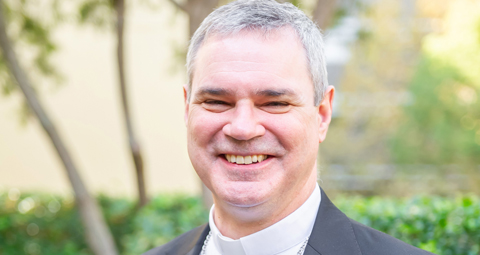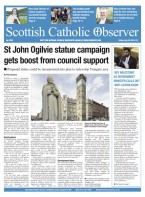July 20 | ![]() 0 COMMENTS
0 COMMENTS ![]() print
print

Scottish links will aid new Melbourne Archbishop as he takes on troubled diocese
HUGH MCLOUGHLIN on the new archbishop of Melbourne, a former student of St Andrews University
When it was announced from the Vatican on Friday June 29, that the much-troubled Catholic Church in Australia had been given a new leader in Melbourne, it quickly became evident that the appointee, 54-year-old bishop of Broken Bay Peter Andrew Comensoli, had a strong Scottish connection.
By coincidence, on the day of the announcement, Professor John Haldane, the respected Catholic philosopher, director of the Centre for Ethics, Philosophy and Public Affairs at St Andrews University, and a consultor to the Pontifical Council for Culture, was preparing to fly to Sydney as a guest of The Scots College, a distinguished Presbyterian boys’ school.
Professor Haldane, who has known Archbishop Comensoli for 20 years, said of his friend and former post-graduate student’s appointment: “It is recognition of his pastoral, intellectual and leadership gifts and is good news for the Church in Australia. With Archbishop Anthony Fisher OP in Sydney and Archbishop Comensoli in Melbourne it has two younger generation figures, both equipped with PhDs in moral philosophy and theology, able and willing to face the challenges of the present with a vision for the future.”
The new archbishop and the professor first met at the American University of Notre Dame in the summer of 1999 when the Fighting Irish held an influential symposium on Fides et Ratio, St Pope John Paul II’s extraordinarily powerful encyclical on Faith and reason published on September 14, 1998.
Professor Haldane was greatly impressed by Archbishop Comensoli but, importantly, it was not simply by his intellectual or academic abilities.
He explained: “Fr Peter, as he then was, was a priest of the Diocese of Wollongong which lies south of Sydney on the coast between the Coral and the Tasman seas. His presence at the conference, as the sole Australian, was testament to his commitment to thinking through the relations between Faith and reason which, as the encyclical says ‘are like two wings on which the human spirit rises to the contemplation of truth.’”
At that time Fr Comensoli was in fact resident in Rome, where he was studying for a Licentiate in Sacred Theology (equivalent to a postgraduate Masters degree) at the Alphonsian Academy for Moral Theology. He had previously earned Bachelor degrees in Theology (1989) and Sacred Theology (1991) from the Catholic Institute of Sydney. After obtaining his STL in the great jubilee year of 2000, he returned to Wollongong Diocese and served for the next six years as its chancellor.
In 2006 Fr Comensoli wrote to Professor Haldane to ask if he could come to St Andrews to study under him in the moral philosophy department. Specifically, he was interested in the principle of ‘double effect’ which, the professor explained ‘is a traditional component of natural law ethics and Catholic moral theology involving the distinction between what one intends to do in acting and what other foreseen but unintended effects occur. This is important for a range of issues but particularly ones to do with the beginning and ending of life. He wrote a good piece of work for which he was awarded the MLitt degree.’
Fr Comensoli then enrolled at Edinburgh University to work under the Anglican moral theologian Oliver O’Donovan, professor of Christian ethics and practical theology, on issues to do with the moral and spiritual nature of persons.
While studying in Edinburgh, Fr Comensoli helped out at St Andrew’s Church, Ravelston. In 2010 he successfully defended his doctoral thesis ‘recognising persons: the profoundly impaired and Christian anthropology’ and graduated with a PhD. His studies in Scotland brought to a successful conclusion, he returned to Wollongong and was soon appointed auxiliary bishop of Sydney.
Bearing in mind his association with Scotland, and taking into account the troubles besetting the Catholic Church in Australia, one is reminded of the unhappy state of the Catholic Church in Scotland in the late 1860s as Pope Pius IX was considering the reintroduction of a Scottish episcopal hierarchy. Propaganda Fide sent the convert archbishop of Westminster, Henry Edward Manning, later a cardinal, as apostolic visitator.
Archbishop Manning first thought that a good candidate to be the first archbishop of Glasgow would be Archbishop George Errington, the deposed coadjutor archbishop of Westminster (it’s a long story).
However, it was noted at the time: “A man would have to be a saint or a madman to accept the episcopal seat of Glasgow: Mgr Errington was neither.”
Clearly, the good Catholic people of Melbourne can rejoice that, in taking on the troubled diocese, Archbishop Comensoli has more courage, and Faith, than Archbishop Errington.











